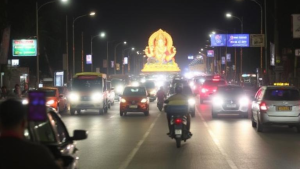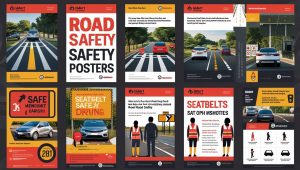Road Rage: A Growing Concern
Road rage is a common problem on Indian roads, fueled by congestion, stress, and aggressive driving. Road rage occurs when drivers lose patience or become frustrated, often resulting in verbal abuse, reckless behavior, or even physical confrontations.
Understanding its triggers and learning how to stay calm is crucial for safe driving. By managing emotions behind the wheel, drivers can prevent accidents, reduce stress, and maintain a safe environment for themselves and others.
Common Triggers of Road Rage
Traffic Congestion and Delays
One of the main causes of road rage is heavy traffic and unexpected delays. Long commutes, slow-moving vehicles, or sudden lane changes can provoke frustration, increasing the likelihood of aggressive behavior.
Reckless Driving by Others
Unsafe driving practices, such as sudden braking, cutting lanes, or ignoring traffic signals, can trigger anger. Recognizing that not all drivers behave predictably helps in managing one’s own reactions.
Stress and Fatigue
Drivers under stress or fatigue are more prone to irritability. Pressure from work, tight schedules, or personal problems can amplify responses to minor annoyances on the road.
How to Stay Calm and Prevent Road Rage
Maintain Patience and Composure
The first step in controlling road rage is staying patient. Deep breathing, focusing on the journey rather than the frustration, and keeping a positive mindset can prevent aggressive reactions.
Avoid Confrontation
Do not engage with aggressive drivers. Avoid eye contact, resist honking unnecessarily, and do not retaliate. Remaining neutral helps de-escalate potentially dangerous situations.
Plan and Manage Time
Time management reduces stress, allowing extra time for travel. Drivers who leave early are less likely to feel rushed and frustrated, which minimizes road rage incidents.
Practice Defensive Driving
Defensive driving is a proactive approach that emphasizes awareness and safety. Maintaining safe distances, anticipating hazards, and making cautious decisions reduce chances of conflicts and accidents.
Benefits of Managing Road Rage
Controlling roads rage improves both safety and quality of driving. Benefits include:
- Lower risk of accidents and collisions.
- Reduced stress for both driver and passengers.
- Better interactions with fellow road users.
- Enhanced focus and decision-making while driving.
By adopting these techniques, drivers contribute to a safer driving culture on Indian roads.
Hubert Ebner India: Road Safety and Defensive Driving
Hubert Ebner India offers training programs that address roads rage, defensive driving, and overall road safety. Through practical sessions and expert guidance, drivers learn how to manage stress, anticipate hazards, and respond calmly in challenging traffic conditions.
These programs are ideal for professional drivers, corporate fleets, and everyday commuters aiming to improve safety and reduce aggressive incidents on the road.
Conclusion
Road rage is preventable with awareness, patience, and proper driving techniques. By following practical strategies and attending professional road safety programs, drivers can enjoy safer, calmer, and more responsible journeys on Indian roads.
✨ Enroll in Hubert Ebner India’s training today to master safe driving and effectively manage road rage! ✨




